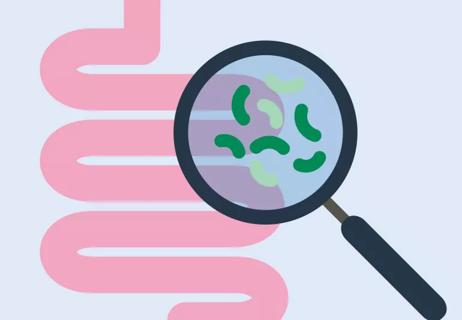Advertisement
Here’s why prebiotics matter

The bacteria in your gastrointestinal tract (what doctors call your gut microbiota) never let any of your food go to waste. Those helpful microorganisms break down and digest your food in order to enhance your immune system and help with inflammation. But what’s keeping those helpful little bugs alive? And how can you get that bacteria to work better for you? The answer is prebiotics.
Advertisement
Cleveland Clinic is a non-profit academic medical center. Advertising on our site helps support our mission. We do not endorse non-Cleveland Clinic products or services. Policy
Digestive disease researcher and registered dietitian Gail Cresci, PhD, RD, shares some secrets behind prebiotics, how they differ from probiotics and a list of foods you can eat to keep your gut bacteria healthy and strong.
To understand prebiotics, you have to know what probiotics are, as they’re often confused with each other.
Probiotics are live microorganisms that’ve been isolated from human intestines and are shown to have beneficial effects when they’re consumed in adequate amounts. Probiotics can be found in dietary supplements and fermented foods like kombucha, yogurt or tempeh. In order to be considered a probiotic, after ingestion, the microorganisms need to survive stomach acid and bile so they can make it all the way to your colon to meet up with the other live microorganisms living there. Once they arrive, they need to be able to survive in that environment. The more variety of these healthy microorganisms you have, the more they can do for you.
Prebiotics function as a food source for your gut’s microorganisms — and they need to bypass digestion and make it all the way to your colon. There, the microorganisms metabolize and ferment the prebiotics to survive. This metabolism and fermentation process is beneficial to your gut health because it creates a variety of other byproducts that help you in a number of ways.
Advertisement
When prebiotics are broken down by the microorganisms in your gut, different short-chain fatty acids are created depending on the kind of prebiotic. As a result, these short-chain fatty acids do a number of things like provide energy to your colon cells, help with mucus production and aid in inflammation and immunity.
“Different microorganisms may use different prebiotics, so not every prebiotic gives you the same effect,” says Dr. Cresci.
The benefits of prebiotics are wide-ranging. There’s still a lot of research being done to determine exactly how food sources for your gut microbiota work, but here are a few things we know prebiotics do:
“The number of benefits prebiotics may have is complex,” says Dr. Cresci. “So much is always continually being discovered.”
Prebiotic foods are usually high in certain types of fiber known as fermentable soluble fiber. How you cook your food determines how many prebiotics are available, too, because your food changes composition based on how you cook it (or not cook it). Although there are many kinds of prebiotics, three of the most common are found in resistant starches, inulin and pectin.
Like fiber, resistant starches resist digestion and end up as a main food source for microorganisms in your colon. When resistant starches are broken down, they often produce butyrate, which helps with water and electrolyte absorption, immune system functionality and anti-inflammation.
“If you’re eating foods that help produce butyrate, and you have the right bacteria in your gut, then your butyrate levels will be higher, which has been shown to have all these beneficial effects,” says Dr. Cresci.
Take potatoes, for example. There’s less resistant starch when you bake potatoes, but if you boil them and let them chill, that white, starchy film that results is the resistant starch you want. Resistant starches can be found in:
Inulin is a prebiotic fiber contained in many plants. This prebiotic can help you feel full for longer periods, assisting with overeating and helping with bowel movements. It can also help lower LDL cholesterol (bad cholesterol), stabilize blood sugars and increase and maintain the good bacteria in your gut. It may also help reduce your risk of colon cancer. While you can take inulin as a supplement in gummy, tablets, capsules and powder form, foods high in inulin tend to also have additional benefits by providing antioxidants and other vitamins. Some of those foods include:
Advertisement
You’ll find pectin in a lot of fruits, especially in the pulp of raw apples. Pectin is a type of gel-like starch, often used to create jams and jelly. This starch has antioxidant and anti-tumor properties. It also may enhance the skin cells of your intestinal lining, decrease the ability for bacterial diseases to take root and improve the diversity of microorganisms in your gut. More human studies are needed to determine other beneficial results. Foods high in pectin include:
So, where and how should you start using prebiotics? Dr. Cresci suggests working them into your diet slowly.
“Don’t go overnight and start eating a ton of these,” she advises. “When they start working and waking up your microbiota, it’ll start creating more gas, so you don’t want a reverse effect where you feel super bloated or gassy. This should be a gradual introduction into your diet.”
And because your body operates on a circadian rhythm, the microorganisms in your gut are more active during the day, so you’ll want to make sure you don’t eat prebiotics too late in the evening.
Advertisement
If you have digestive issues like irritable bowel syndrome (IBS), you may have trouble digesting certain prebiotics, especially stone fruits like peaches, mangos and cherries.
But for the most part, while there’s a lot left to be studied in the field of prebiotics, Dr. Cresci says they can’t hurt if you incorporate them into your diet through natural sources.
“There’s really no way to go wrong with eating fruits and vegetables,” says Dr. Cresci. “You’re going to get fiber, vitamins and minerals, and most likely, you’re also going to get some prebiotic.”
Advertisement
Learn more about our editorial process.
Advertisement

Your gut never really stops working — and that’s not even the most incredible thing about it

A healthy gut benefits your entire digestive system — and more

No, it doesn’t stay in your stomach for seven years

Medications, inactivity, poor diet may all play a role in your stomach trouble

This handy fruit is packed with nutrients that can benefit your heart, gut and immune system

Yogurt, sauerkraut, kimchi and other fermented foods are a good way to get those beneficial microbes

Most adults aren’t getting enough of the essential nutrient

If you’re feeling short of breath, sleep can be tough — propping yourself up or sleeping on your side may help

If you fear the unknown or find yourself needing reassurance often, you may identify with this attachment style

If you’re looking to boost your gut health, it’s better to get fiber from whole foods